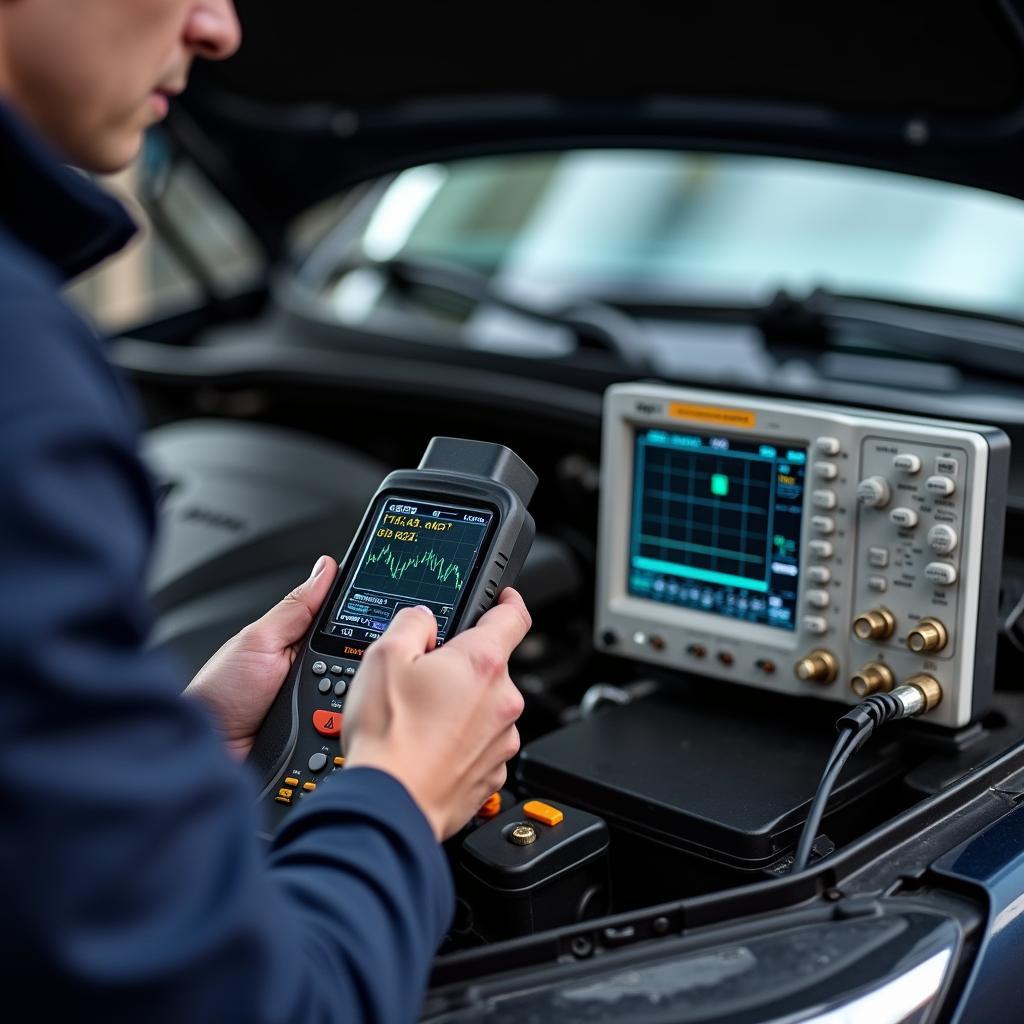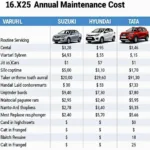Car Service Center Equipments are crucial for providing efficient and accurate vehicle maintenance and repairs. Investing in the right tools and technology allows mechanics to diagnose problems quickly, perform repairs effectively, and ensure customer satisfaction. From diagnostic scanners to lifts and tire changers, this guide will explore the essential equipment that every successful car service center needs.
Diagnostic Equipment: The Eyes and Ears of Your Car Service Center
Modern vehicles are increasingly complex, relying heavily on electronic systems. Therefore, accurate diagnostic equipment is paramount. Investing in high-quality diagnostic tools is not just an expense, but rather a crucial investment that will pay dividends in the long run.
- OBD-II Scanners: These handheld devices connect to the vehicle’s onboard computer, retrieving diagnostic trouble codes (DTCs) that pinpoint potential issues. A good OBD-II scanner should be able to read codes from all vehicle makes and models.
- Oscilloscope: This tool visually displays electrical signals, allowing mechanics to analyze sensor data, identify wiring problems, and diagnose complex electronic faults.
- Pressure Gauges: Used to measure various pressures within the vehicle’s systems, such as fuel pressure, oil pressure, and coolant pressure. Accurate pressure readings are essential for identifying potential mechanical problems.
Lifting and Handling Equipment: Making Repairs Accessible
Lifting equipment provides safe and convenient access to the underside of vehicles, making it easier to perform repairs and maintenance tasks. Without proper lifting equipment, mechanics are forced into awkward and potentially dangerous positions.
- Two-Post Lifts: These are the most common type of lift found in car service centers, providing a stable platform for working underneath the vehicle. They come in various weight capacities to accommodate different vehicle sizes.
- Four-Post Lifts: Ideal for wheel alignments and other services that require the wheels to be free. They offer greater stability than two-post lifts but require more space.
- Transmission Jack: Used for supporting and removing transmissions and other heavy components. These specialized jacks ensure safe handling of heavy parts, preventing damage and injury.
Tire and Wheel Service Equipment: Keeping Vehicles Rolling Smoothly
Tire and wheel service is a significant part of any car service center’s business. Investing in quality equipment ensures efficient and professional service.
- Tire Changer: A machine that automates the process of removing and installing tires from wheels, significantly reducing the time and effort required.
- Wheel Balancer: Used to balance wheels and tires, preventing vibrations and ensuring a smooth ride. Proper wheel balancing is crucial for tire longevity and overall vehicle handling.
- Wheel Alignment Machine: Measures and corrects wheel angles, ensuring optimal tire wear and handling. A modern wheel alignment machine provides accurate measurements and adjustments, resulting in a safer and more efficient vehicle.
Essential Hand Tools: The Backbone of Any Car Service Center
While advanced technology is essential, a comprehensive set of hand tools remains indispensable for every car service center.
- Wrenches and Sockets: Used for tightening and loosening nuts and bolts, these tools come in various sizes and types to fit different fasteners.
- Screwdrivers: Essential for removing and installing screws, these tools are available in various sizes and tip configurations.
- Pliers: Used for gripping, cutting, and bending wires and other materials.
Conclusion
Investing in the right car service center equipments is a strategic move that leads to improved efficiency, accuracy, and customer satisfaction. From diagnostic tools to lifting equipment and specialized tools for tire and wheel service, each piece plays a vital role in providing comprehensive car care. By equipping your car service center with the essential tools and technology, you are setting the foundation for success in the competitive automotive industry.
FAQ
- What is the most important diagnostic equipment for a car service center? A high-quality OBD-II scanner is arguably the most essential diagnostic tool.
- What type of lift is best for a small car service center? Two-post lifts are generally the most space-efficient and versatile option.
- Why is wheel balancing important? Wheel balancing prevents vibrations, promotes even tire wear, and improves overall vehicle handling.
- What are some essential hand tools? Wrenches, sockets, screwdrivers, and pliers are fundamental hand tools for any mechanic.
- How often should car service center equipments be calibrated? Calibration schedules vary depending on the equipment and manufacturer recommendations.
Common Car Service Center Equipment Issues and Solutions
- Problem: OBD-II scanner not connecting to vehicle. Solution: Check the diagnostic port for debris or damage, verify compatibility with the vehicle, and ensure the scanner’s software is up-to-date.
- Problem: Tire changer struggling to remove tire. Solution: Lubricate the bead breaker and ensure proper positioning of the machine’s components.
Further Reading and Resources
Explore more resources on CarServiceRemote for in-depth information on specific car service center equipments and maintenance tips.
Need assistance? Contact us via WhatsApp: +1(641)206-8880, or Email: [email protected]. Our customer service team is available 24/7.


